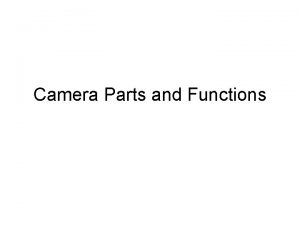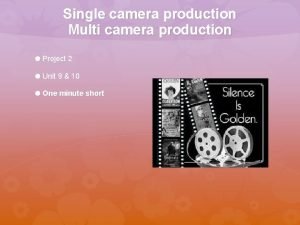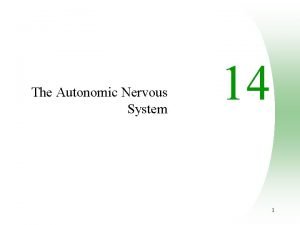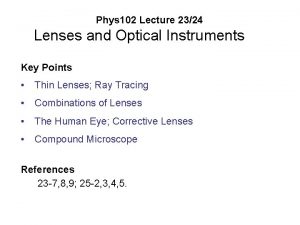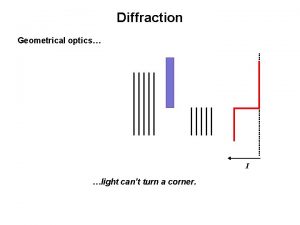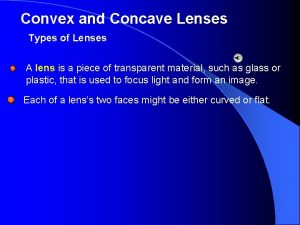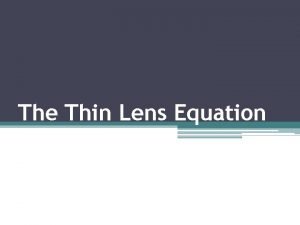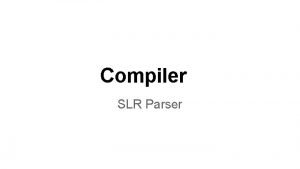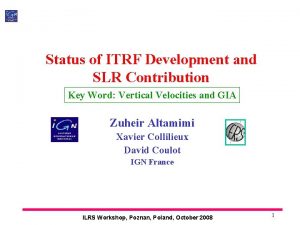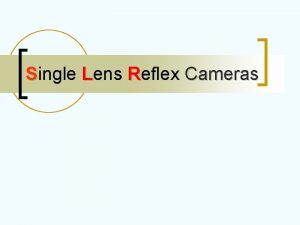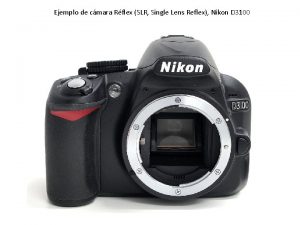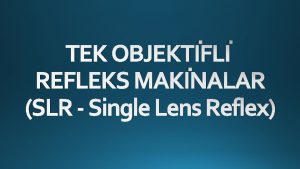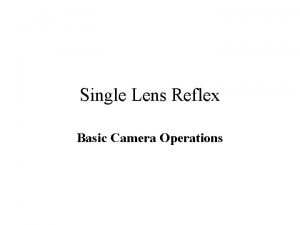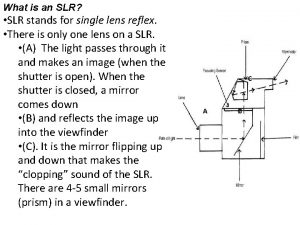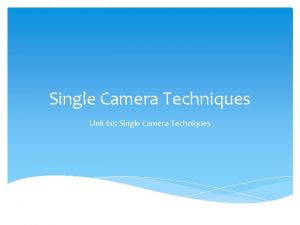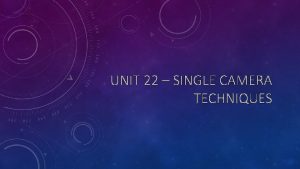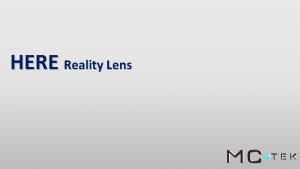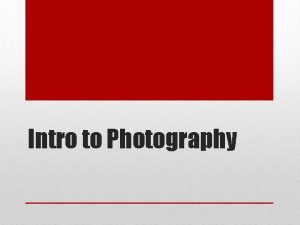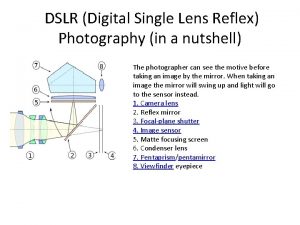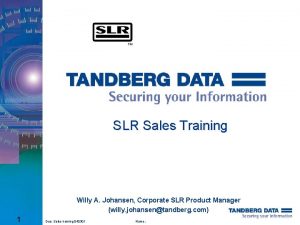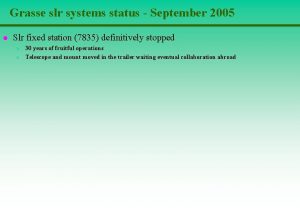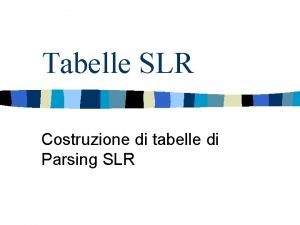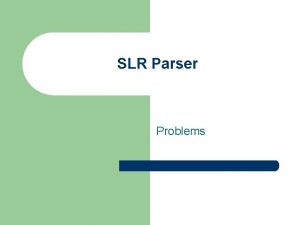The SLR Camera Single lens reflex What you















- Slides: 15

The SLR Camera Single lens reflex What you see is what you get…. . except for exposure and depth of field. What you see is what you get…… except for exposure and depth of field.

EXPOSURE exposure = time X intensity Shutter speed = time for light to enter and also time for motion to blur ss 60, for example, = 1/60 second shutter curtains open and close Aperture = size of opening in diaphragm controls amount of light entering, intensity also influences depth of field indicated by f stop, f 16 for example

APERTURE F stop = aperture / focal length =fixed amount of light Different aperture size for different lenses “F” for focal ratio “Stop” for discrete setting on an adjustment dial Inverse square law for area of circle 1. 4 squared = 2 ½ or 2 X as much light with each change of 1 stop 1. 4 2 2. 8 “stop down” 4 5. 6 8 11 16 22

A balance of shutter speed and aperture provides the “right” amount of light. (The “right amount is determined by the available light and the ISO. ) For any given situation, there a number of possible combinations. overexposure underexposure

Shutter speed control Tripod Rule of thumb for hand held shutter speed is 1/focal length 1 sec. tripod no tripod 60 tripod no tipod

f 4 Aperture control Depth of field f 11 f 22

Metering Center weighted Spot metering Color matrix

Overexposure/underexposure Some manipulation is possible after shooting; but details can be lost in overexposure when using a digital camera or print film. Details can be lost in underexposure when using slide film. Exposure is a series of compromises!

Exposure Histograms No. of pixels at each brightness level Use it to judge whether the exposure is correct for your image.

Exposure pitfalls: backlighting

Dark or light backgrounds Dark white Dark or light backgrounds Dark or light subjects black neutral grey

Exposure compensation +/- You can force your camera to overexpose or underexpose while on automatic exposure setting. underexposure - 1. 0

How much control do you want? Automatic exposure modes

REVIEW film speed ASA/ISO equivalent depth of field fast/slow depth of field preview available light focus point aperture motion f-stop shutter speed rule of thumb shutter speed (B) tripod stops, stopping down cable release light meter self timer TTL, spot, average, matrix, weighted panning close metering or substitute metering exposure lock gray card (18%) sunny 16 rule of thumb overexposure, burn out underexposure backlighting bracketing exposures exposure modes programmed AE, aperture priority, shutter priority, manual exposure compensation

Project assignment: Choose a species. Make the best photographs you can of each of the following: 1. Portrait 2. Morphological detail 3. Habitat 4. Depiction of behavior or interaction
